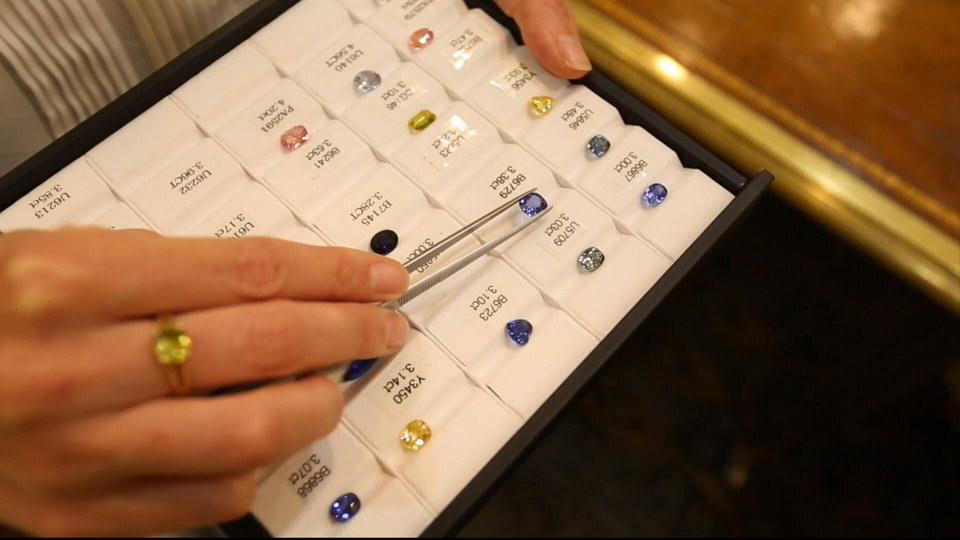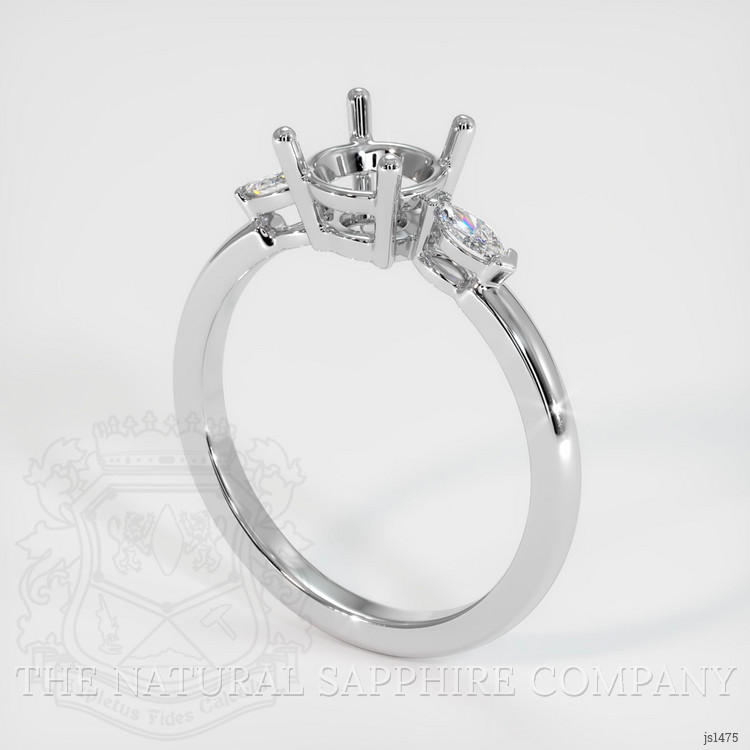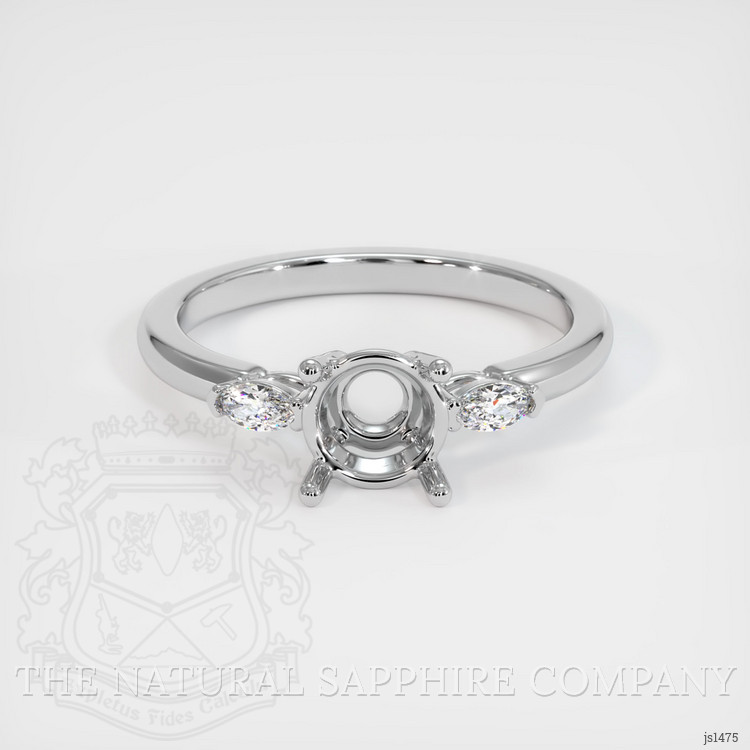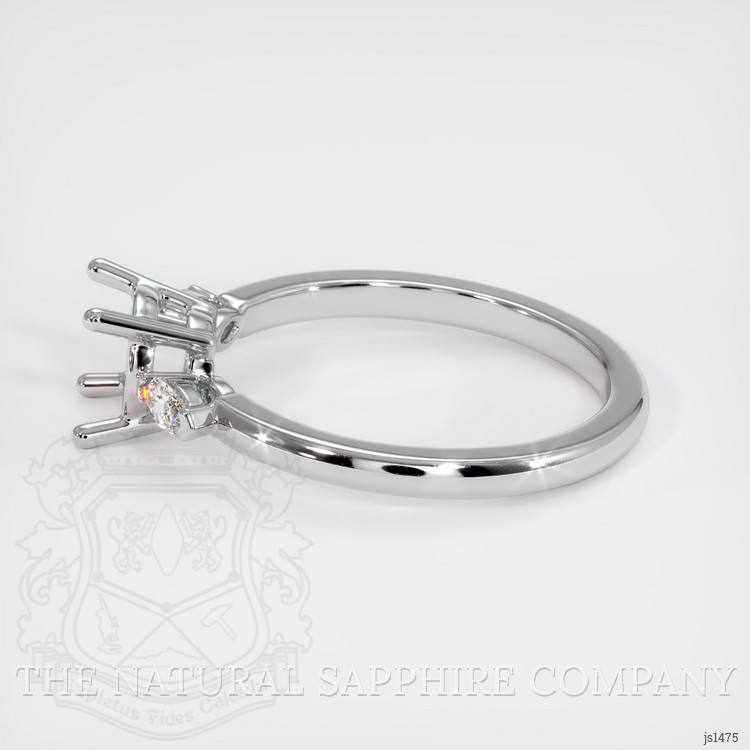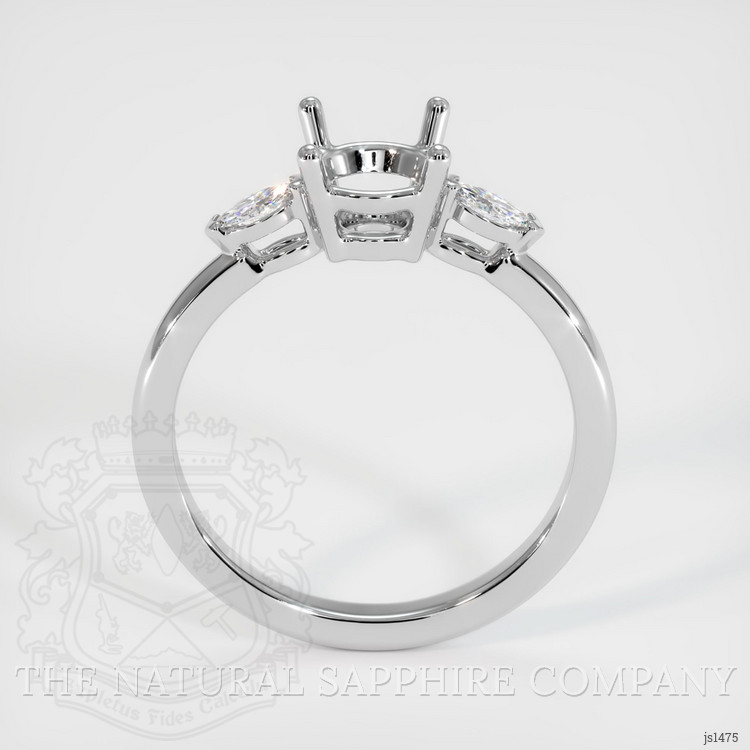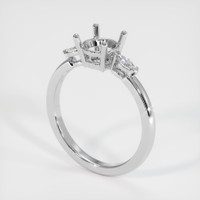

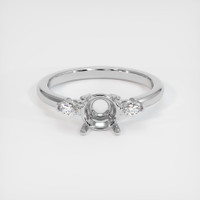
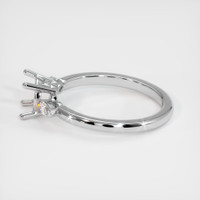
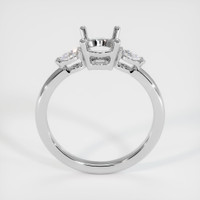
18K White Gold Three Stone Ring Setting
The three stone style presented here is engineered to convey meaning and optical balance, with three individually mounted gemstones aligned to represent past, present, and future, creating a coherent visual axis that reads from any angle. The center seat accepts a primary gemstone choice of sapphire, ruby, emerald, or other custom gem, while the flanking stones are marquise shaped diamonds, selected for their elongation and ability to visually widen the shoulder and intensify side sparkle. Proportional harmony is achieved by matching total depth and crown height between the center and side stones, so that light return and face up appearance remain consistent. The design language favors a low to medium profile head to optimize everyday wearability, while maintaining enough gallery height to allow light entry beneath the stones, which is critical for maximizing fire and scintillation in a three stone composition. Available setting metals include 14 karat and 18 karat variants in rose, white, and yellow gold, mixed two tone configurations in 14 karat and 18 karat, and Platinum 950, giving a wide palette of alloy properties and surface finishes to align with color grading and optical contrast of the selected center gem.
The technical approach to the marquise side diamonds focuses on facet architecture and proportion control, because the marquise shape can exaggerate color and inclusions if not carefully chosen. We specify marquise diamonds with a length to width ratio typically between 1.75 and 2.10 for balanced brilliance, a table percentage within a range that preserves both spread and crown dispersion, and an overall cut execution that favors excellent symmetry and a well centered culet. Clarity grading is selected to complement the center stone, commonly VS to SI range for side diamonds when set against a saturated sapphire or ruby, to preserve apparent white sparkle without incurring disproportionate cost. The marquise setting includes subtle prong shaping at the pointed ends to protect the tips, and the prongs are milled to a precise radius so that pressure during setting is distributed across the girdle rather than concentrated at a thin edge, reducing risk of chipping. For center gemstones, cut recommendations vary by material, we typically recommend brilliant or modified brilliant cuts for sapphire and ruby to exploit their high refractive index, and step cuts for emeralds when preservation of color and minimizing fractures is the primary objective, with acceptance tolerances adjusted for pavilion angle and girdle thickness to maintain secure seat engagement.
Material selection and craftsmanship methods manifest in micro details, because metal behavior affects both fit and longevity. Platinum 950 provides high density and excellent fatigue resistance for prongs and gallery work, and it maintains structural integrity under repeated polishing cycles. Eighteen karat gold alloys offer higher purity and warmer color saturation in rose and yellow variants, while fourteen karat alloys increase strength through higher alloy content, beneficial for thin prongs and fine detail milling. White gold components are finished with rhodium plating for surface brightness, taking into account that plating will wear over time and can be reapplied. Our prong geometry is specified with root thickness and tip fillets calibrated in CAD, enabling predictable deformation under setting force. The head employs a multi prong basket for the center seat, typically employing four to six prongs depending on center stone shape and size, with prong tips tapered to a specific radius to cradle girdles of varying thickness. Shoulders are dimensioned for a smooth transition from band to head, with cross sectional area chosen to balance tactile comfort with resistance to bending and stone loosening.
The design and refinement workflow integrates digital and hands on processes to achieve both elegance and function. We begin with precise CAD modeling, where every filament of the gallery, every prong taper, and the internal clearance beneath the center seat are defined to micron aware tolerances, then render optical simulations to evaluate light interaction between the center gem and the marquise diamonds. A rapid prototype is printed in high accuracy resin to validate fit, proportion, and ergonomics, followed by a lost wax casting stage for the metal trial piece. After casting, workability is confirmed, then hand finishing proceeds through multiple grades of files and abrasives, culminating in machine polishing that follows grain flow to avoid shadowing. Stone setting is sequenced to minimize stress, with side marquise diamonds set first using angled prong approach to lock their points, and the center seat prepared and checked for exact seat depth and ledge uniformity before final prong closure. Laser welding is applied for reinforcement in critical junctions, and final burnishing secures prongs while preserving facet edges on the marquise diamonds.
We offer customization options to align technical specifications with aesthetic preference, including selection of center stone cut and size, gem treatment disclosures, and metal alloy choice, all documented with recommended handling and care instructions. For sapphires and rubies, heat treatment is common and acceptable for color stabilization, and their Mohs hardness near nine allows for confident prong setting, while emeralds commonly present internal inclusions and may be clarity enhanced, therefore we recommend slightly deeper galleries and additional prong protection if an emerald center is chosen. Proportional guidance for center to side weight ensures that the three stone relationship reads as intended, with side marquise diamonds typically selected so the combined visual mass complements the center gem without overpowering it. Before final delivery each ring undergoes a multi point inspection that includes prong pull testing, visual facet alignment checks, and metal finish verification, and we provide documentation of metal type and finish along with recommended service intervals for rhodium replating and prong maintenance, ensuring that the three stone piece remains both meaningful and robust for daily wear.

